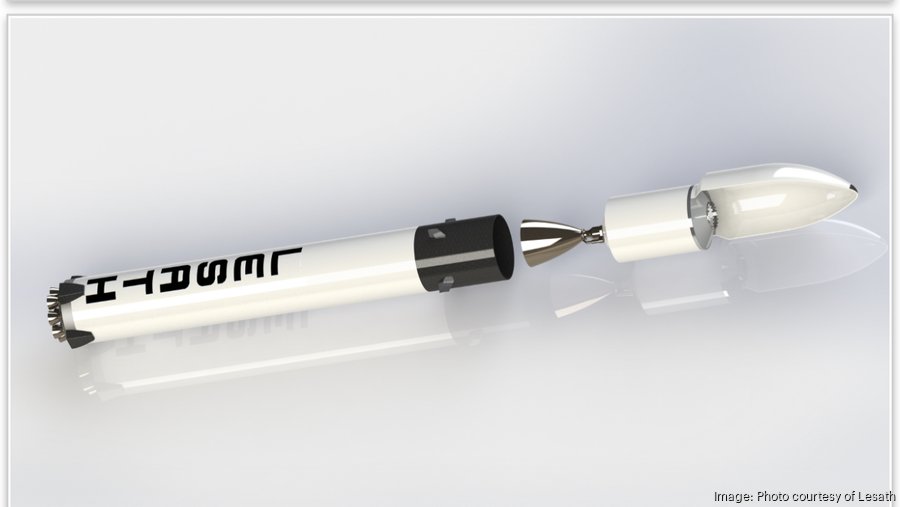Listen to this article 3 min
A Buffalo-based startup that’s developing a rocket engine and space vehicle to send into lower orbit for defense and commercial applications is in the market for a 100,000-square-foot manufacturing space in Buffalo.
The company, Lesath International Inc., is the brainchild of CEO Thomas Pawlak, who has recruited engineers and folks from NASA to make up the remote team of 26. Pawlak founded the company in 2021 but previously worked in the space division for Servotronics.
The company is developing a full-flow staged combustion rocket engine and space vehicle to launch satellites. Pawlak said it will be a “highly advanced proficient engine,” with the ability to be reused 50 times.
“The more you can reuse an engine, the cheaper you can offer launch services,” Pawlak said. “We want to get 50 reuses out of one engine as opposed to between two and 20, like other companies.”
Those capabilities will allow Lesath to launch quickly, which will give it a competitive advantage in the defense industry, he said.
“The DOD (Department of Defense) is looking for a rapid response launch for satellites within 72 hours,” he said.
This year, Pawlak hopes to close the company’s seed round of $2 million. Lesath also applied for a $2 million grant from the National Science Foundation. The total $4 million will go toward building a smaller scale prototype of the space vehicle and engines “to prove that we can do 50 launches,” he said.

The engine is still in the analysis phase of development, Pawlak said, after which comes a prototype.
“We’ll put it on a test stand and keep running it 50 times,” he said.
If successful, the company will need to scale quickly, with big capital and asset acquisition. That’s when it will begin its Series A funding round, with a goal of between $70 million and $125 million in 2024.
“That could take six to 12 months to close,” Pawlak said. “The majority of that will be for 3D printers, CNC machines, staff, engineers, materials and a 100,000-square-foot facility. We’ll need that space to work and test plus have clean zones and room for 3D printers and computer space.”
Pawlak said he’d like to find a location in a “hub zone,” as Startup New York provides state tax exemptions for 10 years.
The end goal is to launch the full space vehicle — between 96 and 125 feet in height and 6 feet in diameter — from Cape Canaveral, Florida, in the next five years. To do that, the company is going to need somewhere between $200 million and $400 million.
“It’s been challenging, with a lot of sleepless nights, but I’m learning a lot, and it’s a lot of fun,” Pawlak said. “It’s scary, but I realize our team can do it. We have staff from NASA and SpaceX on board, so we have a good team that can actually pull this off.”
Pawlak said he wants to grow the company here because he was “born and raised” in Buffalo.
“We need a foundation that can support it, with engineers and employees in an area that can support them as a good place to live,” he said.
